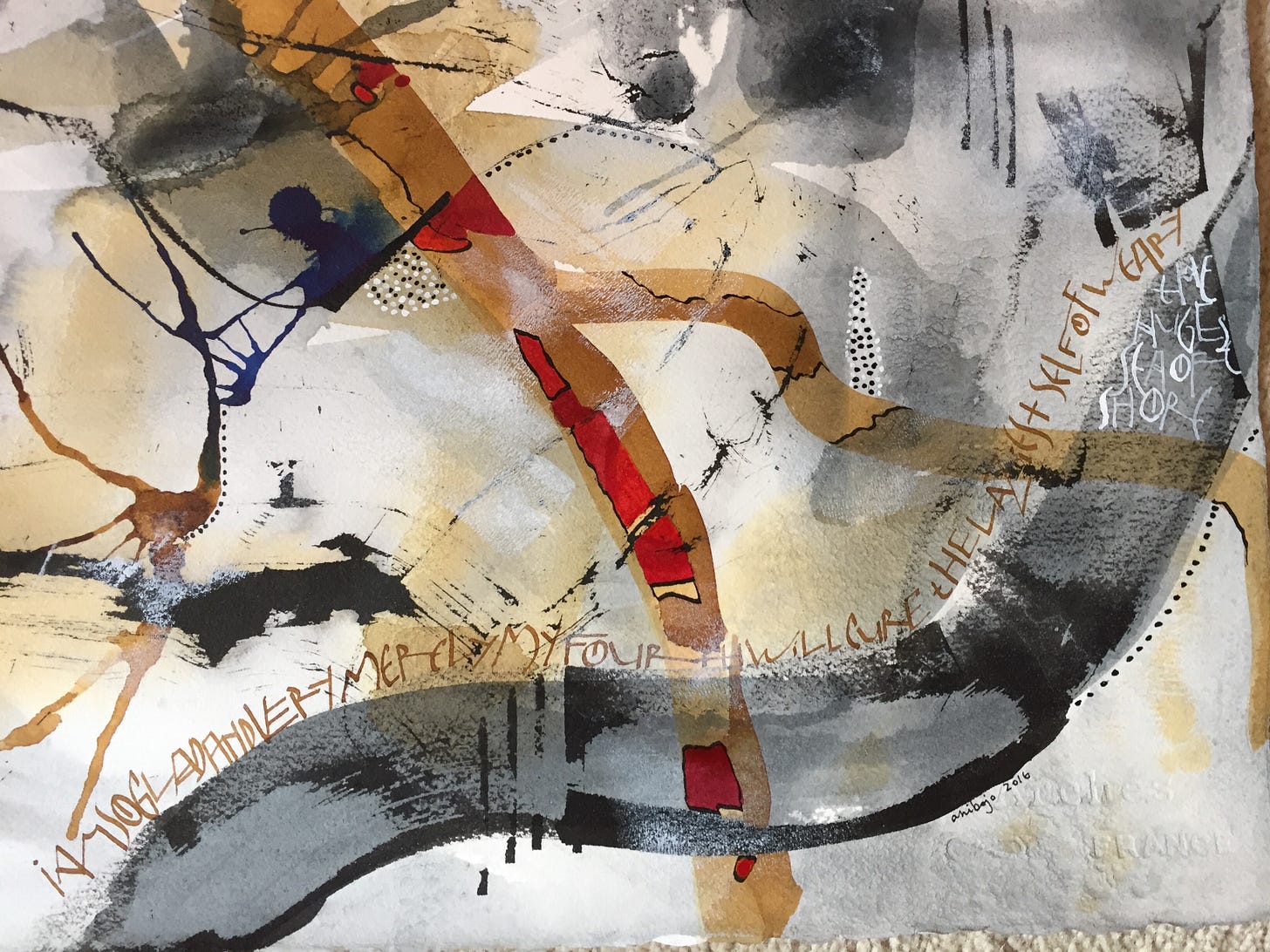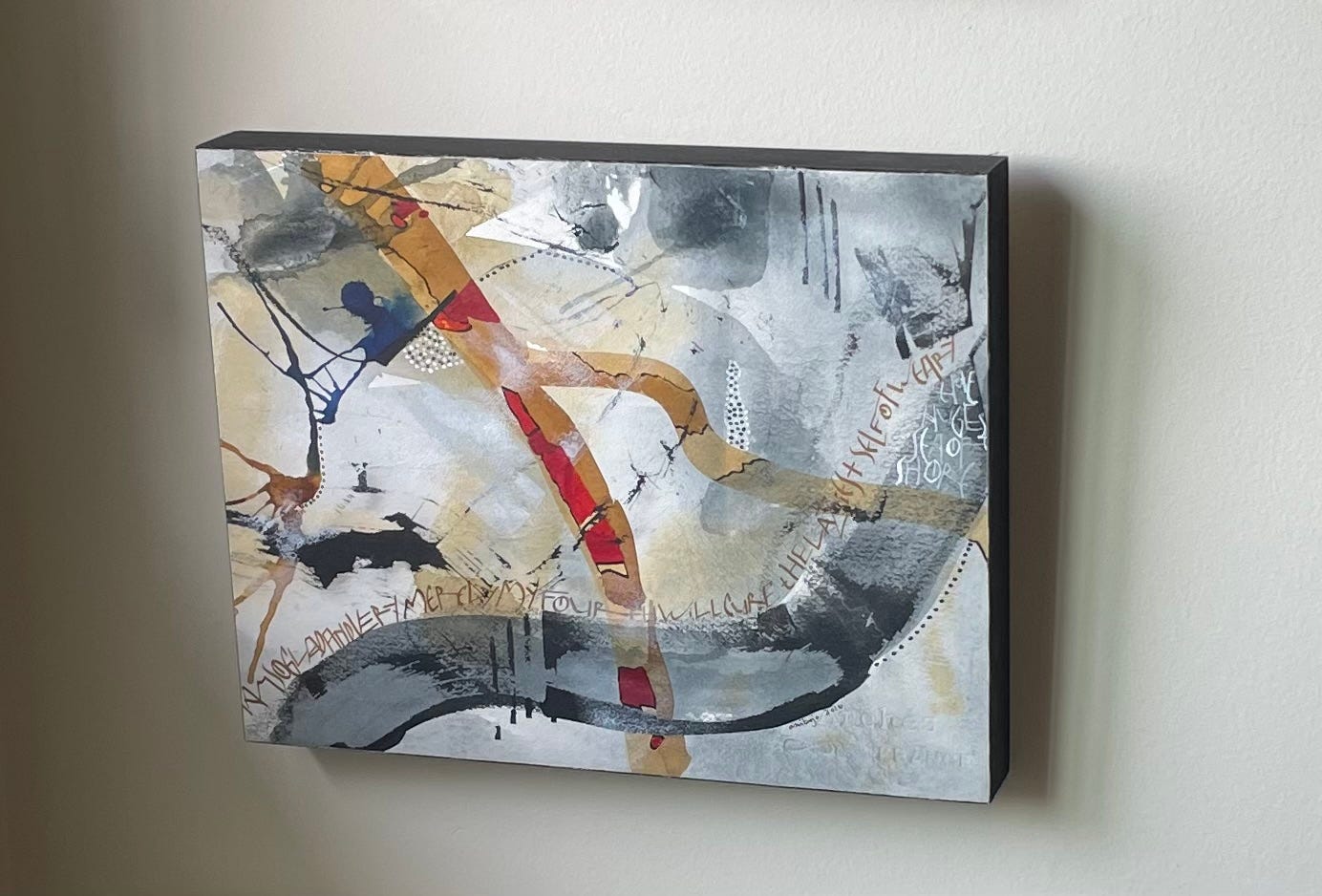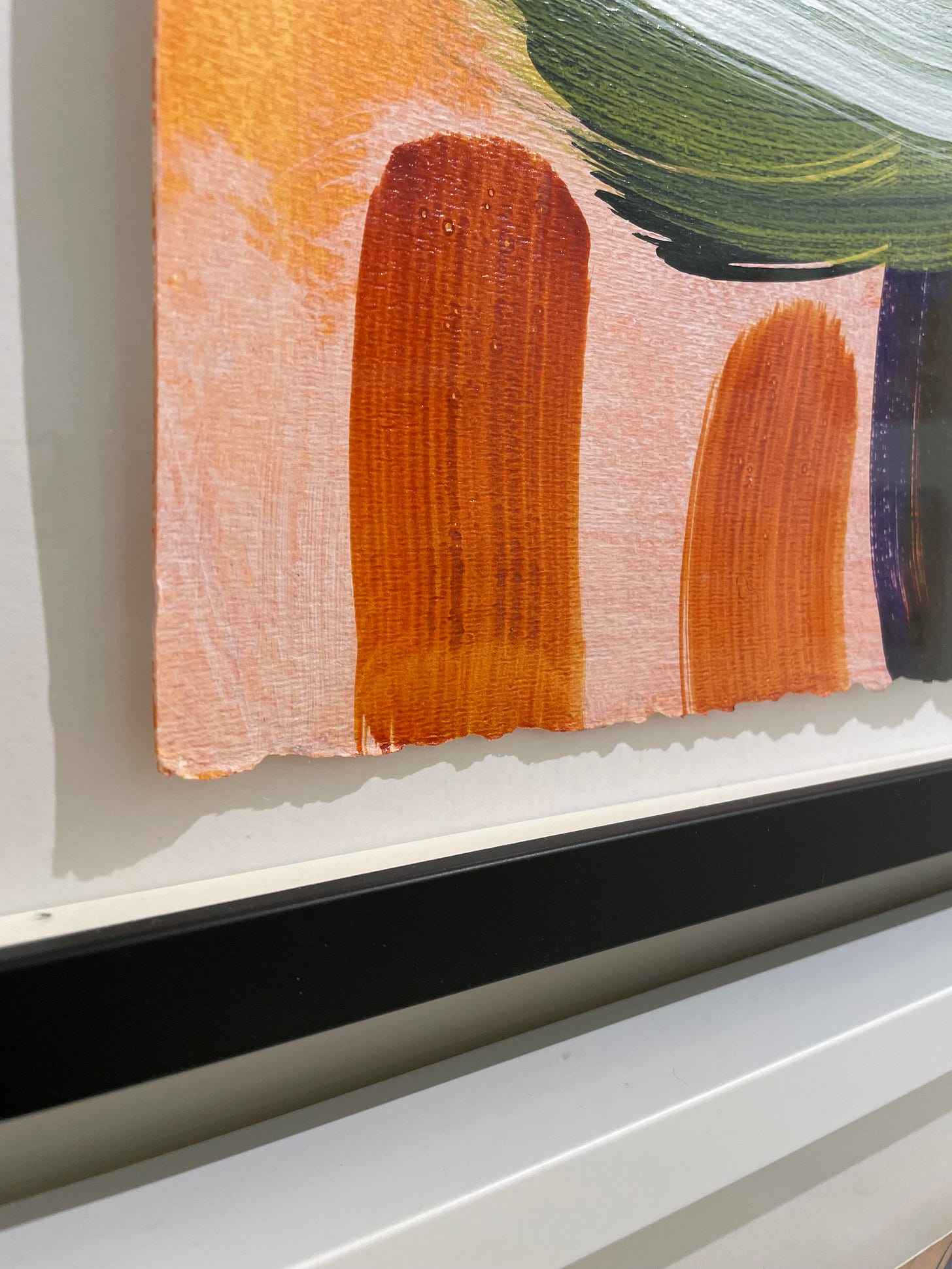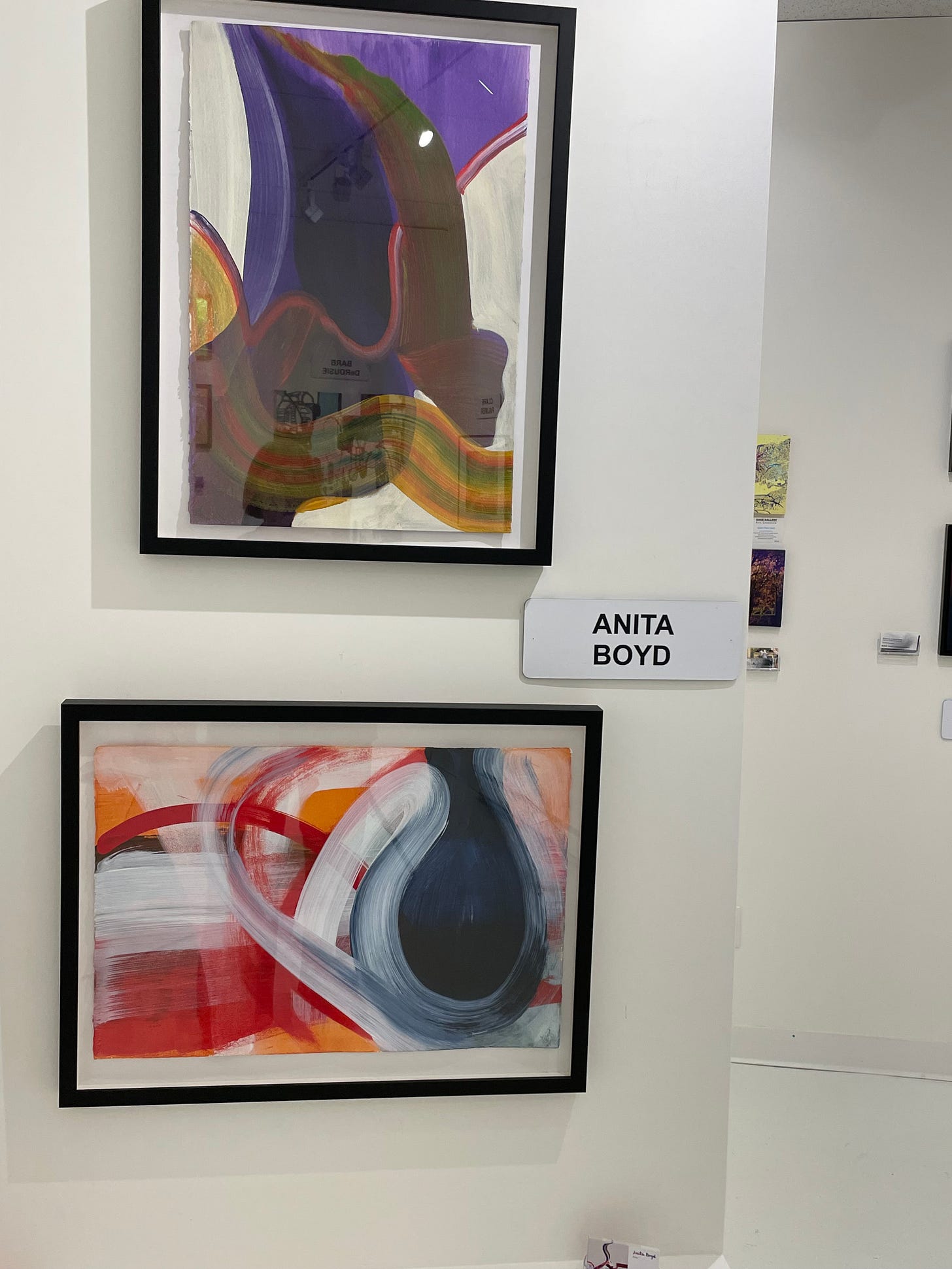I have a collection of work I have made on paper that I have never shown because PAPER!
This work is colourful and expansive. The Rives BFK paper is a joy to use with wide brushes and watery acrylic paint or ink.
However I hate pinning down these exuberant pieces with a mat and glass. So they have waited. Sometimes I have mounted such works on wood panel, to good effect, but that can be finicky work.
Lately I have experimented with floating those luscious pieces of paper so their torn edges can be celebrated. I do like this. The problem is always the glass which immediately flattens the work, and introduces a layer of distracting reflections upon the surface of the work. Opting for anti-reflective glass is always the better choice, but awkward and expensive.
I have just brought in two such pieces for exhibition on our second gallery where all 22 Gage artists show smaller work.
Yes, the reflections are distracting. I will soon know if I need to go the extra step with the non-glare glass.
I would certainly enjoy hearing from you about your experiences preparing works on paper for showing … and selling!










I too am interested in this. The wood panels, I am feeling, are not really a renewable resource. Even acrylics are, well, plastic, that in one way or another contribute to environmental toxicity.
I’ve been told glass is hard for galleries to get insurance coverage for while shipping. Though I don’t like the reflection, the glass frame is the best protection for paper artworks.
Another factor is potential damage to frames. One little nick and the damaged frame is not saleable. If they don’t sell you have to store them and they are expensive in the first place.
It would be nice if you could frame on demand -showcasing a few in ideal frames and the rest in protective sleeves. But the public is a cash and carry lot and they want the piece ready to go.
The artist needs to make the upfront investment by showing their work in the best possible light.
Hi Anita,
I've done a lot of adhering the paper to a cradled panel using acrylic medium and then weighting it down with books. I generally leave a little overlap and then trim the excess off once it's dried. Of course it won't highlight the edge of the paper but it is effective. I'd love to see some of these mounted.